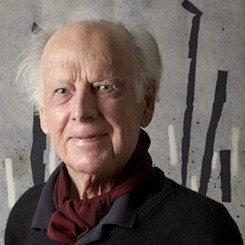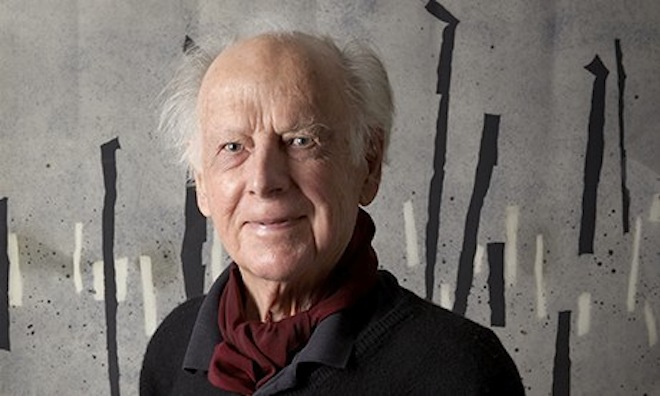At the beginning of a chapter for 1998 for a book I am in the midst of writing, I describe 1998 as “a messy year”. When I re-read this description, I couldn’t quite recall why exactly I chose this turn of phrase—in the text, it is followed by an account of the emergence of a distinct plurality in the art being produced by artists that year. But, in fact, it was more than that: primarily, the opening up of the “avant-garde” art scene, as linked to the big events of the early 1990s—China’s New Art, Post-’89 and China Avant-Garde, the first big surveys of new art, and China’s 1993 presentation at the Venice Biennale—to a new generation that was led, amongst others, by the then rebel-like figure of Qiu Zhijie. Amid these transitioning generations were clashes of ideas and, as a result, disagreements that were vibrant and, at times, fairly violent in the ardor of new beliefs that were being expressed. It was this ardor that was, at least to one artist (Wang Jianwei), unpleasantly reminiscent of the rhetoric of Red Guards at the start of the Cultural Revolution.
Upon reflection, the reason that this impression of “messiness” stuck with me was that these disagreements were suddenly, shocking it seemed at the time, much more public than they had before, unfolding not in private homes or between small gatherings of friends as had been the case previously, but in public arenas. It was in 1998 during one such fracas in a public arena—as public as was possible within the art world in the late 1990s—that I first met Michael Sullivan. The occasion was the symposium for the second Shanghai Biennial—neither yet international nor “biennale”—held in a cold room on the upper floor of the building on Nanjing East Road that the Shanghai Museum of Art then occupied. The exhibition brought together ink paintings spanning artists of several generations, and it was divided into two sections: the main part at SAM and a more contemporary selection housed at the Liu Haisu Museum. Tradition and convention were thus given clear precedence over the more adventurous contemporary approaches from China’s modern masters such as Qiu Deshu, Wang Tiande and Gu Wenda, Zhang Yu and Yan Binghui, Yang Jiechang, and even the more traditional Liu Guosong from Hong Kong.
The room assigned for the symposium was filled with a large group of ink painters, their sponsors from China and abroad, Chinese scholars and critics, with additional scholars from America, Canada and the UK, amongst them Julie Andrews, Britta Erickson and Michael Sullivan.
The subject under discussion was ink painting, naturally, during which, ever curious of new impulses unfolding in the art of the day, and how those related to the state of ink painting and the ink painters mindset, Michael Sullivan ventured to say he had heard that a number of artists in Beijing were making work of a particularly violent contemporary nature. The question was far from misplaced or pedantic: in reference to the language being explored by artists like Xiao Yu, Sun Yuan, Zhu Yu, Li Xianting would soon describe the winter of 1998 as the “vernal equinox” of the art world.(1) A mere two weeks after the biennial symposium, the force of this language was fully demonstrated in Beijing with the exhibition Corruptionists. In Shanghai, meanwhile, Michael Sullivan’s comment prompted a discussion that erupted in ways which clearly surprised even this seasoned art historian. The tone of the invective was clearly disproportionate to the question—this was a scholarly symposium, after all—especially when it prompted furious comment on foreign interference in Chinese culture at a time of China’s need to find an artistic voice of its own, led by its own critical thinkers.
The pity of it was that this fury should have been directed at Sullivan, the one Sinologist amongst even those present who was the greatest advocate of creative freedom for artists in China—for freedom of expression, period. From the first, Sullivan was one of a small number of Sinologists and classical scholars who made time for understanding and researching the art of his time: hence his dual contribution to the literature of China’s cultural history and the art of the twentieth century. The breadth of this interest was most recently confirmed in the ambitious Modern Chinese Artists: A Biographical Dictionary, published in 2006 and containing detailed biographical references to 1,800 artists—an extraordinary commitment to documenting and crediting the artists of the period.
But then, unlike many Sinologists, Michael Sullivan’s engagement with China began not from the past as an abstract study, but from his present as a young man—and a pacifist—arriving in the Chongqing in China’s southwest in 1940 as a volunteer for the International Red Cross. I believe this fact is highly relevant to appreciating the character that made Sullivan unique. Few of us today truly grasp what it meant to be a declared pacifist in 1940 at a time when Britain was at war, not merely with Germany, but with Hitler. Every man was expected to do their duty: to be a pacifist was to step into a fringe minority considered unpatriotic, liable to ostracism (if not imprisonment), and certainly to dismissal from most working environments. As Sullivan’s work in Chongqing demonstrated, pacifists did not lack for bravery. They simply held ideals incompatible with those of mainstream society. This, in a way, was what put Sullivan in close camaraderie with the artists who befriended him in China in the 1940s. This experience changed not only his life but laid the groundwork for Sullivan’s contribution to changing a good deal of Western understanding about China’s ancient culture. His writings also explained how, for artists of the twentieth century, that relationship was to change what had evolved as aesthetic values through three thousand years as New China was established and, in turn, radically altered by the force of the Cultural Revolution.
Following that fortuitous meeting with Michael Sullivan in 1998, I was fortunate to visit him several times at his home in Oxford. His great work on China’s modern art, Art and Artists of Twentieth Century, published in 1996, was immediately an essential reference for my work, and how it was compiled an endless and fascinating topic of discussion when we met. What struck me then and what of this tome remains an inspiration is that it was written by a man who was passionate about his subject, who treated that subject as art first and foremost, not merely as a topic over which he could claim supremacy, even though it was a field of largely unbroken ground for which he was indisputably a pioneer. I never asked him if he was disappointed in the 1980s by the work he found of those artists whose friendship had had gained in the early years in Chongqing. The vicissitudes of the era had no doubt taken their toll, but Sullivan, with an ever keen eye for art, found much to uphold his interest. No matter how messy the scene was, politically, ideologically, socially, artistically, his commitment was constant. Those of us who aspire to recording the art in the contemporary era owe a great debt to the mindset of this fine, magnanimous historian.
(1) Li Xianting, “The Pluralistic Look of Chinese Contemporary Art Since the Mid-1990s”, Chinese Art at the end of the Millennium, p. 80, Timezone8, Hong Kong, 2001.


